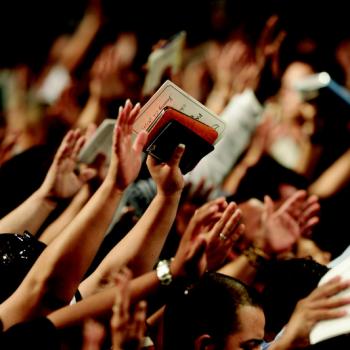An outdoor retreat has the potential to be a life-changing experience for your parishioners. Introducing them to a natural and open environment can lower their stress levels, stimulate their creativity and lead to more thought-provoking conversations.
Follow these seven planning tips to make your outdoor church retreat as transformative and impactful as possible.
1. Choose a Relevant Location
First and foremost, your church retreat should take place in a relevant location. It should be an hour or two away from your hometown so parishioners can escape their other responsibilities for a few days. Scenic views are also important because they create a calming atmosphere and make it easier for participants to disconnect from the outside world.
Ideally, someone in your church might have a cabin or private campsite they can lend for the weekend. This location makes the planning process much simpler. If these options aren’t available, you can also rent a countryside AirBnB or book a campground at a nearby state or national park.
2. Narrow Down Your Target Audience
Every successful faith-based retreat focuses on a target audience. For example, many churches offer retreats specifically for men, women and children. Separating them by age and sex tends to be an effective engagement strategy because these groups can closely empathize with each other’s struggles and form deeper relationships.
Youth retreats are especially important because they lay the groundwork for your church’s future prosperity. National surveys have shown that Gen Z is America’s least religious generation, so it’s crucial that you get younger parishioners involved in church activities.
3. Establish a Theme
Narrowing down your target audience also makes it easier to establish an interesting theme. You can organize your retreat around a Holy Day, a scripture passage, a biblical figure or a unique spiritual practice. For example, scheduling your retreat during Lent or Advent allows you to focus on a resurrection or nativity theme.
A theme will give your parishioners a central discussion point in all of their daily activities and provide continuity for the whole retreat. Older parishioners generally prefer quiet Bible discussions and group prayer sessions, while younger parishioners will benefit from spending time outside doing team-building exercises.
4. Determine Your Budget
Once you find the location, identify your target audience and start organizing theme-based activities, you can determine the retreat’s budget. Payment for the lodging will make up the bulk of the budget, but you also need to account for food, transportation and supplies for the various activities. These costs will vary based on the size of your retreat group.
You will also need to buy or rent a trailer to haul all of the retreat’s equipment. One of your best options is a flatbed utility trailer because they come in different lengths and widths to accommodate a variety of cargo. To pay for these expenses, you should set up a payment system through PayPal, Venmo or another online platform so parishioners can easily contribute.

5. Structure Each Day
Each day of the retreat should have the same general structure. The activities might vary, but they should have consistent timeslots. Mealtimes and bedtimes should also stay the same. You basically have to organize each day as if you’re running a summer camp. Getting your parishioners into a routine will help them settle into the new environment more quickly.
For example, if you want to take the group on a day hike at some point, you need to section off a few hours in the retreat’s schedule beforehand. Planning things in advance makes your job easier and allows parishioners to make the necessary preparations. Trying to plan impromptu activities messes up the rest of the day’s schedule.
6. Create a Set of Rules
Church retreats are sacred and intimate gatherings, so there needs to be a set of rules. Many churches enforce a no-electronics policy on their retreats to increase participation and ensure that people don’t spend the entire time on their phones. Quiet hours are also a good idea so people get enough sleep and tensions don’t arise.
Most importantly, your retreat should include a vow of silence because the conversations can get extremely personal. If you want your parishioners to open up and speak their minds, you need to assure them that nobody will spill their secrets or confessions after the retreat.
7. Use the Element of Surprise
Finally, your retreat should include at least one surprise to give the parishioners a treat. You could book a guest speaker, plan a movie and pizza night or throw a celebration for someone’s birthday or anniversary. Although structure is important, planning a fun event to break the routine can work wonders for group morale.
Make Your Outdoor Church Retreat a Success
The ultimate goal of a faith-based retreat is to bring the participants closer to each other and closer to God. If you’ve accomplished this task, then you’ve done your job as a church leader. These seven tips will help you make your outdoor retreat a success and strengthen the foundation of your parish for years to come.
















